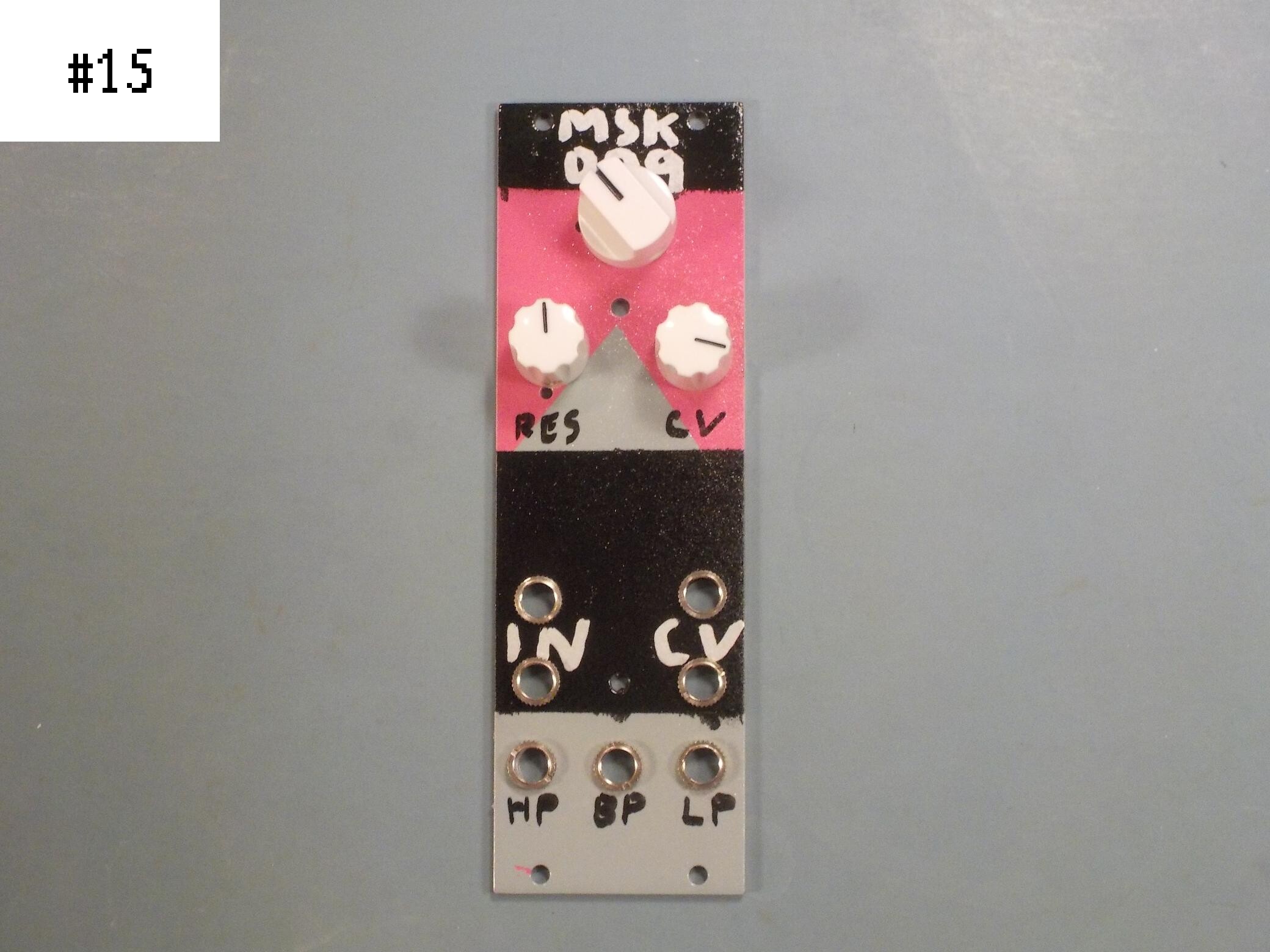Green modular, part 3: More metal
2019-01-29 environment chemistry panels
The RoHS "big three" metals I talked about last time occupy a lot of attention of synthesizer manufacturers because we have specific legal obligations we must meet regarding those metals; but many other metals are also used in building synths, and are also relevant to the environmental footprint of making and owning a synth. Let's look at some more of those.
This is Part 3 of a series that began with Part 1.
Base metals
Steel
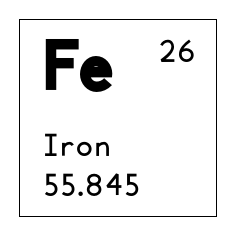
"Steel" refers to refined iron alloys in general, which vary a lot in their actual composition. I don't tend to think of steel as a major input for my own company because I'm not making entire synthesizers but modules and very little steel goes into those. But that may be short-sighted. We all know that the price of a modular synth has to include the case. Rank beginners make a list of modules they want, add up the prices on ModularGrid, and then discover that really buying and using a synthesizer with those modules will cost significantly more because of the need to buy a case and power supply. In a similar way, the environmental impact of building a synthesizer has to include the metals that go into the case, and there's often a lot of steel in particular in the structure of the case, the screws holding everything together, and so on.
The environmental impact of iron is lower per gram than for most of the more exotic metals, but it's used in larger quantities (more grams) and there's still a fair bit of energy that goes into producing it. There is also direct carbon emission from iron smelting. And as every Dwarf Fortress player knows, carbon is used directly as a reagent in smelting iron, meaning that even if you had a carbon-free source of energy for the smelting process, you'd need to burn some carbon for it anyway because the carbon is not only an energy source but part of the chemical reaction that separates the iron from the ore.
You may note that I switched from saying "steel" to saying "iron" in that last paragraph, and there's a reason: a significant amount of the "steel" used in synthesizer construction is actually stainless steel, containing a fair bit of nickel and chromium, and that makes a difference. I talk a bit about nickel below, and discussed chromium briefly last time. Each of them significantly increases the environmental impact beyond that of the iron alone, by being higher-energy to mine, and more toxic. Stainless steel in modular synths most often occurs in fasteners. For larger structural components aluminum and plain steel are much more popular. I ship plain zinc-plated steel (not stainless) machine screws and nuts with my modules, and I use nickel-plated brass standoffs for structural purposes within the modules, but many people use stainless steel in each of those applications. I'm not sure which is the most environmentally friendly choice - both I and the others are primarily choosing fasteners on other criteria.
Copper
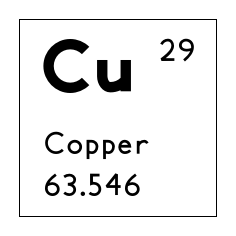
Nearly all the wires in a piece of electronic equipment are made of copper, and there are a lot of wires. The "traces" on the surfaces of a printed circuit board, which serve the function of wires, are also nearly always made of copper. It's used this way because of its high electrical conductivity: among metals only silver is a better conductor of electricity, and silver is subject to tarnishing as well as being much more expensive than copper. Gold, aluminum, and calcium have conductivity approaching that of copper, but gold is too expensive and aluminum and calcium are impractical to use in most of the places copper is used.
I'm usually not too worried about the environmental impact of electrical copper. It's a relatively non-reactive metal, meaning that the metal in its refined form won't contribute much to toxic waste; it's not really worse than other base metals from an energy impact of mining perspective; and it's expensive enough that it will frequently be recycled anyway. One thing that does concern me a little is the lead added to some copper alloys. The brass (copper-zinc alloy) circuit board standoffs I'm currently using are actually sold under an RoHS exemption for lead: they're allowed to contain it despite its normally being forbidden, because the lead is needed for "machineability." It makes possible cutting threads into the material, so the fasteners can be screwed together. Without lead, copper alloys tend to be brittle or stringy and to destroy machine tools instead of taking proper threads, and at the moment there is no really usable alternative. However, lead in brass is probably not quite as worrisome as lead in solder: it's used only in relatively small percentages (the RoHS exemption is for "up to 4%") and it may be relatively tightly bound to the other metals in the alloy, not as prone to leaching out.
Nickel
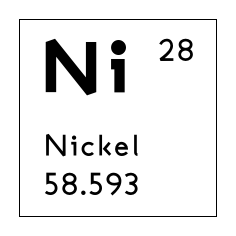
Apart from its use as an alloying element in stainless steel, nickel in synthesizers is usually a plating for other things. It's used on a lot of fasteners, such as those circuit board standoffs I mentioned, and it's also part of the plating on higher-quality circuit boards. In earlier decades printed circuit boards were sometimes made with bare copper traces, and hobbyists etching their own boards still make unplated boards sometimes, but virtually all professionally made boards have some additional plating on top of the copper, to prevent tarnishing, to enhance soldering, and for a few other reasons. The low-end version is something called HASL ("hot air solder levelling"), where the board is coated with a relatively thick layer of solder alloy, with or without lead. Most higher-quality boards, including all the ones I use at North Coast Synthesis, have ENIG plating: "electroless nickel, immersion gold." The gold is an ultra-thin layer whose main purpose is to prevent tarnishing. "Immersion" plating is basically the thinnest kind of gold plating available - because this application does not need much thickness and it's important to conserve the expensive gold. The nickel is added between the copper and the gold because it's not practical to put immersion gold directly onto copper. Thin gold plating would dissolve into the bulk of the copper instead of remaining on the surface, negating its benefit, whereas nickel can act as a barrier preventing that effect. The amounts of the actual metals in these plating layers are very small and not really of concern, but I'll talk a bit about the possible impact of the larger chemical process in a future part of this series.
Aluminum
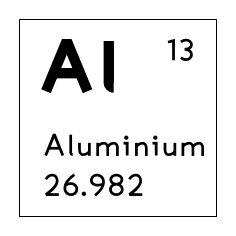
Aluminum is another significant metal for structural components of synthesizers, less so for the electronic parts. It may actually be used in larger quantities across the modular industry than steel, especially because of its use in module front panels. People make those out of many different materials, including non-metals like fibreglass circuit board material, acrylic, and even bamboo; but modules intended for serious use pretty much always have metal panels to meet the necessary mechanical standards, and aluminum is the most common choice for that. It's what I use in my designs.
The biggest environmental issue for aluminum is probably the energy consumed smelting it. Aluminum smelting requires massive quantities of energy, and that energy has to be in the form of electricity because, like carbon for iron, the electricity itself is directly used in the smelting process and isn't just a source of generic energy. For this reason, aluminum smelters tend to be located near large sources of electricity like hydroelectric dams, and the environmental impact of the smelter is closely tied to the source of the electricity they're using. If it can be smelted with a renewable energy source, aluminum can actually be quite low in its environmental impact. It's also a metal for which effective recycling is both possible and often practiced.
Tantalum
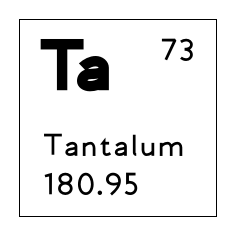
This is an interesting one. Most people have little direct experience of tantalum and have only read about it in newspaper articles, which usually describe it as a critical "ingredient" for making cell phones, specifically. Tantalum is actually somewhat important for electronics in general, with no unique relevance to cell phones, but the scale of its use and importance have varied a lot in the last few decades.
Tantalum is quite a rare element and it would not be especially notable except for one critical property. Like aluminum, tantalum reacts very fast with oxygen to form a thin, hard layer of ceramic-like oxide on the surface, which prevents further oxidation. Both aluminum and tantalum are thought of as non-corroding metals, because they actually corrode very fast but in a self-limiting way. And the oxide layer turns out to be especially thin in the case of tantalum. Tantalum also has the necessary mechanical properties to be made into very thin foil. So it's possible to build an electrolytic capacitor out of tantalum foil using the thin oxide layer as the dielectric, and since the capacitance of a capacitor increases as the dielectric layer gets thinner, so tantalum electrolytic capacitors are able to pack very high capacitance into a small space. They can also beat the older, cheaper aluminum electrolytics in other ways, especially in retaining their capacitance at high frequencies.
Starting in the 1980s, through the 1990s, and into the early 2000s, the increasing popularity of miniaturized consumer electronics was driving demand for bypass capacitors that would be physically small, high-capacity, and have good high-frequency performance. Aluminum electrolytic caps at the time didn't work well, some important kinds of high-performance ceramic capacitors simply hadn't been invented yet, and there was a surge in popularity of tantalum electrolytic capacitors. It looked like they were the way of the future.
But serious problems came to light. In particular, one source of tantalum (not the only or the biggest source, but an important one) is from river mud in central Africa, where "artisanal" miners may be extracting it in environmentally damaging ways. During the Congo Wars (1996-2003) there was a lot of concern that combatant forces on multiple sides were exploiting the tantalum resources, often with atrocities against the local populations along the way, in order to fund their activities; tantalum became regarded as a "conflict mineral" and there was a lot of international concern. There were organizations formed and policy initiatives put in place to require tracking of where the tantalum that went into electronics actually came from.
Meanwhile, manufacturers who were using tantalum electrolytic capacitors in products started to discover that such capacitors were not so great as they had first seemed. All electrolytic capacitors, both aluminum and tantalum, are subject to a problem whereby over the course of years it's possible for the liquid electrolyte to dry up. When that happens to an aluminum capacitor, it just stops working (it goes open-circuit). You lose the bypassing effect of the failed capacitor, but if the product is well-designed, it will probably still work on the strength of the remaining capacitors. The dead one won't have been the only one. But a dried-up tantalum capacitor can fail short, meaning that in a power bypass application it will suddenly put a low resistance across the power supply, dissipate a whole lot of heat in a fraction of a second, and explode. An exploding capacitor can destroy the whole product, and notwithstanding conspiracy theories about planned obsolescence, manufacturers prefer not to have their products do that. And while the world was starting to form international commissions to try to deal with the problem of conflict tantalum coming from unsavoury sources, the industry was also improving aluminum-electrolytic technology (closing the gap between those and tantalum caps) and inventing newer and better kinds of ceramic capacitors, each of which can serve many of the needs that tantalum capacitors serve.
The overall result is that tantalum electrolytic capacitors are much less appealing to designers today than was the case twenty years ago. Where tantalum electrolytics once replaced aluminum electrolytics, they have largely been replaced themselves by high-performance ceramic or even by just going back to modern, better-quality versions of the old-fashioned aluminum electrolytics. As with several other regulatory matters, by the time the regulators started imposing serious limits and obligations regarding tantalum onto the industry, the industry had already started to move away from tantalum for other reasons of its own.
From my perspective, although granted there may still be places it makes sense to use them, I regard tantalum electrolytic capacitors as almost historical curios now. I don't use them in my designs, a practice made easier by the fact I design analog audio circuits which usually don't really need the claimed special properties of tantalum electrolytics anyway. When I see a tantalum capacitor specified in someone else's design that I am building, I'm inclined to substitute it with something else, taking some care to be sure I match whichever specifications are really necessary and relevant.
Precious metals
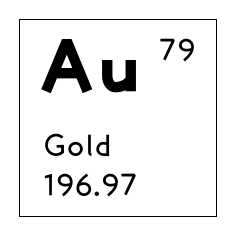
Gold is an obvious precious metal in synthesizers not so much because there's a lot of it used - there is not - but because it tends to be used in visible places, and people notice its distinctive appearance. We see gold a lot on connectors, whether it's patch cables, power connectors, MicroSD card edges, or whatever; and on circuit boards. In a less visible application, the microscopic wires connecting IC chips to the external pins inside the package are usually also made of gold. It's important and not easy to substitute because it doesn't tarnish, it has good electrical conductivity, and it can be made into extremely thin coatings and wires.
Gold mining has historically been terribly dirty and toxic, and the same kinds of worries people have about "conflict" use of tantalum apply to or have at one time applied to gold because of its status as an international currency reserve. Many tonnes of ore have to be processed to extract a relatively small amount of gold and the initial impact of the mining scales with those tonnes. On the other hand, gold because it's so expensive is only used in tiny amounts. The plating on a circuit board, as I mentioned, is vanishingly thin; that on a connector is supposed to be a fair bit thicker, but still involves a very small number of milligrams of actual gold metal.
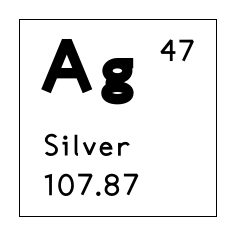
Silver is another important precious metal for electronics. I mentioned that it has higher electrical conductivity than copper, which in turn beats gold. In a few electronic applications where conductivity is extremely important (notably some microwave communications systems) silver is actually used as an electrical conductor to get in those last few siemens. It has some of the same qualities that make gold attractive. But it's much more vulnerable to tarnishing. I use some silver-plated jack sockets in North Coast Synthesis products; the prospect of tarnishing is not a huge problem because the mechanical design of the connector has the plug tip scrape over the surface, effectively polishing it, every time a plug is inserted or removed. I also sometimes use switches with silver contacts. The silver included in my lead-free solder, discussed in the last installment of this series, probably outweighs these pure-silver applications in most North Coast products. Since very much industrial silver is mined as a by-product of mining other metals (lead, copper, and so on) instead of from primary silver mines, and silver is not particularly toxic, I think its environmental impact is so to speak lost in the noise of the other metals.
It's an interesting question where to draw the line on what counts as a "precious" metal. There've been times in my life, before my money went into this company, when I've actively invested in precious metals; and so I'm keenly aware that the only ones with special tax status as "precious" in Canada are gold, silver, and platinum. But I've also heard several others, including tantalum (discussed above), platinum-group metals like palladium and rhodium, and even copper, sometimes classed as "precious." There is not much platinum used in electronics. It's a major industrial metal in some other industries, and it might be used in some equipment like crucibles used in certain parts of the electronics industry, but there won't be much platinum directly included in a synthesizer. A possible small exception might be some PTC "tempco" resistors used for temperature compensation. Rhodium seems even less relevant to electronics; I think of it as being mostly for lighthouses and oil refineries, but I'm not even sure that my impression on that is up to date.
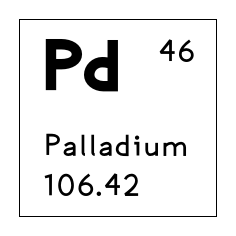
I mentioned ENIG plating of circuit boards, with gold over nickel, but there is a further development of that, occasionally used, called ENEPIG: "electroless nickel, electroless palladium, immersion gold." Although the nickel is included to prevent bad interactions between the gold and copper, the nickel too can sometimes interact badly with the gold and result in quality-control problems, so some high-volume manufacturers have started adding a further layer of palladium between the nickel and the gold. It makes the process more complicated and thus more expensive, so whether it's an advantage or not depends on how much money is saved in the lower rate of board defects from including the palladium. Not many circuit-board contractors working in the quantities I order even offer this as an option. This and possibly small amounts alloyed into gold on the thicker connector platings are probably the biggest uses of palladium in electronics.
There is a lot more that can be said about metals in electronics. In particular, I haven't discussed some other interesting base metals commonly used in alloys (such as zinc), nor said much about use of non-metallic forms of metals, in particular in ceramics. But having already filled two entries on metals where I'd originally planned just one, I'm going to move on to discuss other environmental topics in the next part of the series; such as the impact of wood harvesting, and organic solvents, with relation to synth manufacturing.
◀ PREV Green modular, part 2: the big three metals of RoHS || Green modular, part 4: Wood, and toxic waste NEXT ▶
